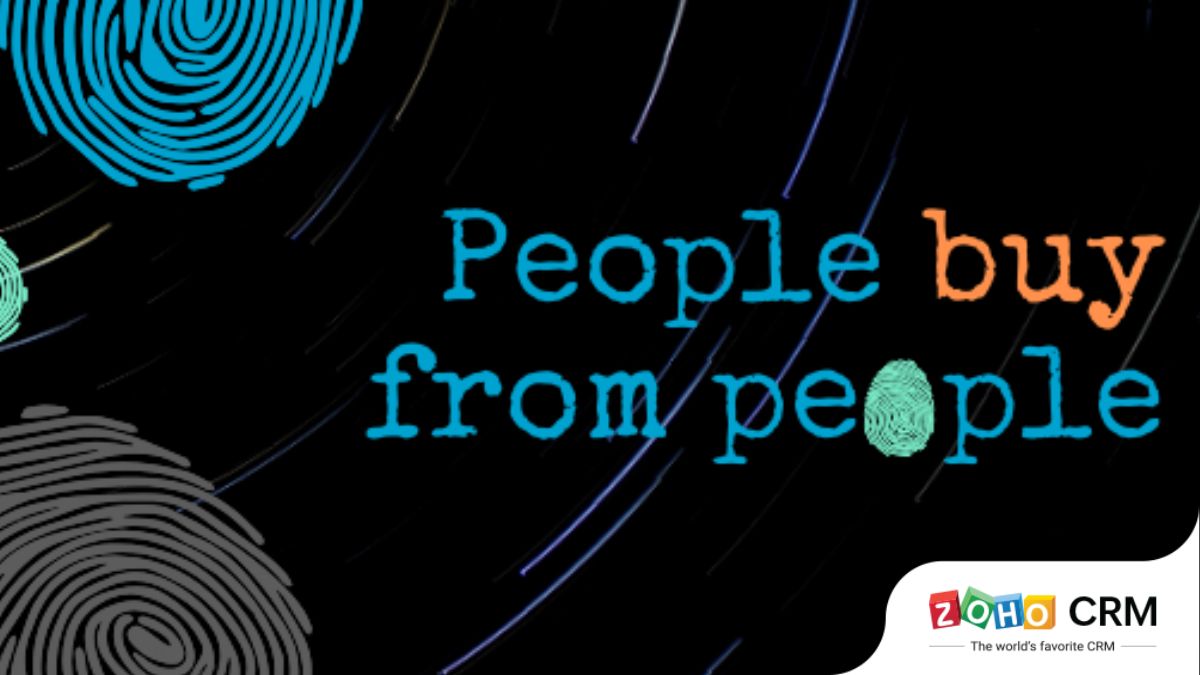The first step to selling better: Be human
- Last Updated : August 7, 2023
- 476 Views
- 5 Min Read

People want humans to behave like machines and machines to behave like humans, isn’t that funny?
Humans now have a template for interacting with each other.

The response to “How are you” is always “I’m fine.” Do you remember the last time you asked someone how they were, and they didn’t respond with some variation of that? However, if you spend some time with a person, they do tend to open up and share. The same is true for your customers.
It often happens that we lose track of what our customers need and start putting all our efforts into selling a product by any means necessary. We forget that the sales process would involve less friction if we focused more on what the prospect needs rather than the revenue we want. Hard selling hardly works.
The more “human” the selling process, the more effective it gets. By human, I mean understanding the buyer’s needs, problems, and the ecosystem they are in. Put yourself in their shoes, and make them believe you genuinely want to make their lives easier. This is tough but doable, and doing so comes with rewards. For one, it becomes easier for customers to part with their hard-earned money if they believe you care about them.
Personalization is one method of selling in a more human way. It stems from a natural desire to have individualized, personable interactions. Remember the time when you received a handwritten letter addressed to you, and you couldn’t contain that excitement? Personalization has this kind of effect, but the medium is different in today’s business world. It’s all digital!

In this digital era, personal touch in communication has definitely taken a hit. How can you make up for this without spending a ton of money? Let’s begin by being a little more aware that we are selling to humans who can think for themselves and feel hundreds of emotions in one day. Customers are not machines where we input a set of commands and they produce a desired result.
How do you start humanizing sales and marketing?
Begin by being aware of the who, why, what, when, and how. Who are you selling to, why are you selling to them, what are you offering, when do you make sales, and how do your customers buy from you? Just answering these questions can make you better at understanding your customers and appealing to them as people.
What I’m taking about is nothing but getting back to basics and rooting it in before you decide being all ‘salsey’ on your next call or edgy with your next ad copy or email. Doing your homework will help you make a better connection with your prospects.
1. Know your product in and out
If you are selling an iPhone to a customer, you are not just selling another phone but a lifestyle. An iPhone is much more than just a phone to its users. Knowing your product can help you when you are making your sales pitch. If you have good product knowledge you will be able to connect the dots when your customer is in a dilemma.
Where do you start?
Try the product yourself if you can.
Get to know the brand and its positioning.
Sketch an idea that you want to implant in your users’ minds. Yes, its inception.
2. Know your buyers
Ask questions, and listen better. Creating a profile for your average customer can help you connect with them when you write an email or deliver a cold call. For example, a retail store might use CRM software to keep track of inventory and a bank might use it to manage customer data.
Where do you start?
Create a profile and use it effectively. Run through it before you start talking to customers or begin writing an email, webpage, or blog.
Keep refining this profile as you get more feedback.
3. Map your buyer’s journey
It is important to understand what your prospects are likely to do once they start engaging with your company. For example, you send a webinar invite to 100 prospects. 30% of the prospects open your mail, 8% of these click on the invite CTA, and only 2% of these sign up for the webinar.
What happens to the prospects who do not sign up for the webinar? How about those who don’t open your email or don’t click on the CTA? You have spent thousands of dollars to get them into your ecosystem. Defining a clear path for them can increase your ROI exponentially.
Where do you start?
Clearly define what criteria your buyers must meet to be sales qualified (SQL) and marketing qualified (MQL).
Send SQLs and MQLs relevant information through different channels (emails, ads, social media, etc.) and drive them towards your goal.
3. Know when to sell
Identifying the point in the sales cycle where your prospect is most likely to buy your product can change the game. This when the buyer is mentally and emotionally ready to spend.
Where do you start?
Align your marketing and sales to work towards the goal.
Define procedures to follow up with the qualified leads (this is easy to do with a CRM software).
4. Crunch some numbers
This is one of those things that you need to do, like it or not. Regularly tracking your sales and marketing efforts keeps you on track and helps you align your goals and strategy. It is a constant reminder of why you are selling in the first place.
Where do you start?
Revenue is not the only factor to consider. Here are a few other metrics you should be measuring:
% conversion from MQL
% conversion from SQL
% of qualified leads (MQL’s and SQL’s) through different channels such as webinars, emails, social media, third-party referrals, etc.
These goals measure the performance of your current sales and marketing strategy. Let’s say % conversion from MQL drops. You might infer that the new ad campaign you launched has not done its job. With this information, you can immediately adjust your marketing strategy.
5. Repeat
You have evaluated your sales performance. Now it’s time to implement the feedback from your prospects. Your prospects’ feedback is the backbone of a more humanized selling process.
Try to understand how your product is perceived by buyers. Reviews, surveys, social media, and the press can help.
Fill in the gap between your positioning and the buyer’s perception.
The next time you try to sell your product, keep in mind that you are selling to a living, breathing human who responds, reacts, has just 24 hours on their clock, just as you do.


